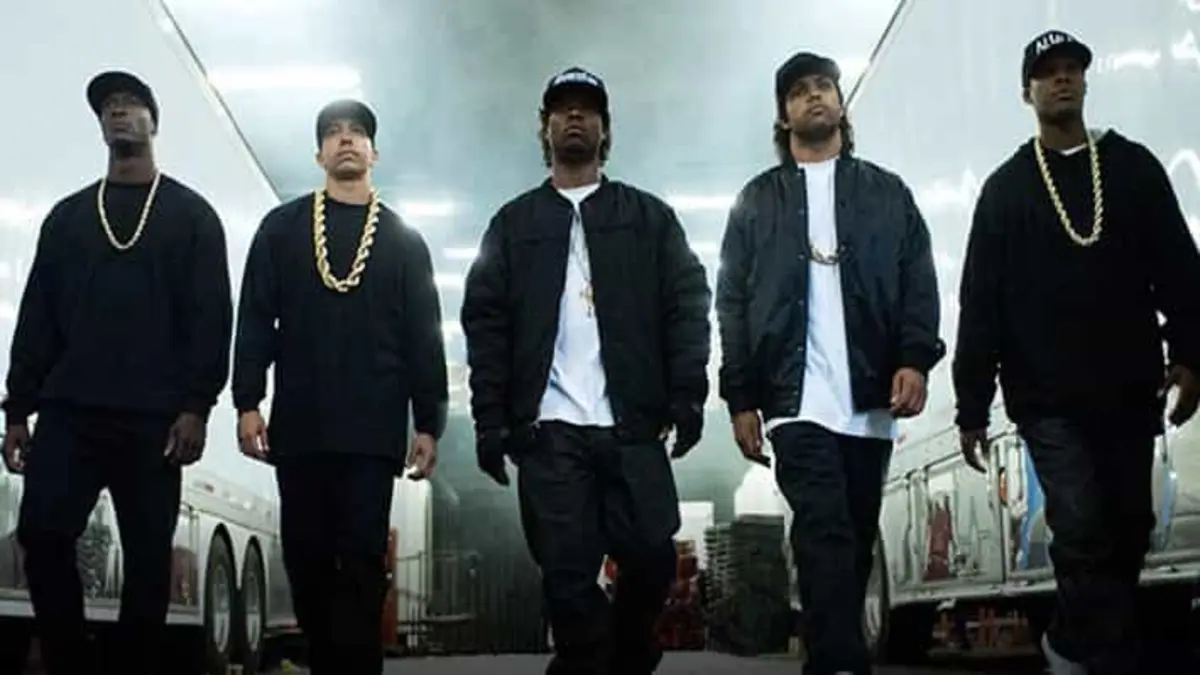The 1990s marked a transformative period in the world of hip-hop, giving birth to an era that resonates with timeless beats, impactful lyrics, and cultural revolutions. Defined by authenticity and a raw storytelling narrative, the Golden Era of 90s rappers has left an indelible mark on the music landscape. This article delves into the historical, cultural, and musical nuances that made this period iconic, exploring the lives and contributions of legendary figures such as Notorious B.I.G., Tupac Shakur, Queen Latifah, and Lauryn Hill.
Historical Context of the 90s Rappers Hip-Hop Scene
To understand the meteoric rise of 90s rappers, one must examine the socioeconomic backdrop that fueled the genre’s growth. The 90s saw hip-hop emerge from the underground, breaking through cultural barriers to become a dominant force in mainstream music. This was an era where technological advancements in music production played a pivotal role, enabling artists to experiment with innovative sounds and craft groundbreaking beats that would define the era.
The rise of rap as a dominant genre was not only a musical phenomenon but a cultural and political one. It became a powerful tool for marginalized communities to express their struggles, aspirations, and frustrations. The 90s hip-hop scene was a reflection of the social issues of the time, providing a platform for artists to voice their concerns and challenge the status quo.
Pioneering Icons of 90s Rappers
Notorious B.I.G.: The East Coast Luminary
Christopher Wallace, known as the Notorious B.I.G., emerged as a towering figure in East Coast hip-hop. His journey from the gritty streets of Brooklyn to becoming one of the greatest storytellers in rap history is a testament to his lyrical prowess and narrative authenticity. Early life struggles and brushes with crime provided the raw material for Biggie’s compelling storytelling, captivating audiences with his vivid depictions of life in the urban trenches.
Biggie’s musical evolution from the streets to stardom showcased his versatility. From the debut album “Ready to Die” to the posthumously released “Life After Death,” Biggie’s discography remains a cornerstone of 90s rap. His legacy extends beyond music, influencing subsequent generations of artists and earning him a revered status in the pantheon of hip-hop legends.
Tupac Shakur: The West Coast Maverick
Tupac Shakur, a force from the West Coast, brought a unique blend of charisma, intellect, and social activism to the 90s rap scene. His artistic journey traversed various facets, from acting to poetry, demonstrating a multifaceted talent that transcended traditional boundaries. Tupac’s outspoken nature and willingness to tackle societal issues head-on set him apart, making him a symbol of rebellion and resilience.
Controversies and feuds marked Tupac’s career, notably the infamous East Coast-West Coast rivalry. This intense feud between East Coast and West Coast artists fueled media speculation, contributing to the mystique surrounding Tupac’s life and untimely death. Despite the controversies, Tupac’s impact on 90s rap and his enduring legacy as an icon continue to resonate with fans worldwide.
Women in 90s Rap
Queen Latifah: Breaking Barriers
In an era dominated by male voices, Queen Latifah emerged as a trailblazer, breaking gender barriers in the world of 90s rap. Her influence extended beyond music, encompassing acting and entrepreneurship. Queen Latifah’s commitment to feminism in hip-hop paved the way for future female artists, fostering an environment of empowerment and equality.
Queen Latifah’s career was characterized by a dynamic range of roles, from the socially conscious “Ladies First” to the empowering anthem “U.N.I.T.Y.” Her impact on the perception of women in rap extended beyond the 90s, laying the foundation for a more inclusive and diverse hip-hop landscape.
Lauryn Hill: The Miseducation Revolution
Lauryn Hill, a pivotal figure in 90s rappers, made an indelible mark as a member of The Fugees and through her groundbreaking solo album, “The Miseducation of Lauryn Hill.” Hill’s lyrical prowess and soulful delivery transcended traditional boundaries, blending rap, R&B, and neo-soul in a genre-defying manner.
As a solo artist, Lauryn Hill’s impact on female empowerment in rap cannot be overstated. Her unapologetic approach to addressing personal and societal issues resonated with audiences worldwide. The Miseducation of Lauryn Hill remains a timeless masterpiece, earning critical acclaim and setting a standard for future generations of artists.
Evolution of Rap Styles in the 90s
The 90s witnessed a dynamic evolution of rap styles, with artists experimenting with diverse sounds and themes. Three prominent styles defined this era, each contributing to the rich tapestry of 90s hip-hop.
Boom Bap Dominance
At the core of 90s rap was the Boom Bap sound, characterized by its distinctive drum patterns and samples. This style, originating from the East Coast, provided a rhythmic foundation for storytelling. Artists like Nas and Wu-Tang Clan mastered the art of Boom Bap, creating timeless classics that continue to influence contemporary hip-hop.
Emergence of Gangsta Rap
The West Coast brought forth the gritty and unapologetic subgenre of Gangsta Rap. Artists like Dr. Dre, Snoop Dogg, and Ice Cube used their lyrics to provide a raw portrayal of inner-city life, touching on themes of violence, crime, and social injustice. The West Coast sound became a dominant force, shaping the narrative of 90s rappers.
Influence of Jazz and Funk in Rap Production
Beyond the traditional hip-hop sounds, the 90s saw an infusion of jazz and funk elements into rap production. Artists like A Tribe Called Quest and De La Soul incorporated these genres, creating a more eclectic and sophisticated sonic palette. This fusion not only expanded the musical landscape of hip-hop but also contributed to the genre’s mainstream appeal.
The Golden Age Albums
“Illmatic” by Nas: Blueprint of Perfection
Nas’s debut album, “Illmatic,” stands as a testament to the artistic pinnacle of 90s rap. Released in 1994, this masterpiece captured the essence of urban life, showcasing Nas’s lyrical prowess and storytelling finesse. Tracks like “N.Y. State of Mind” and “The World Is Yours” solidified Nas’s status as a lyrical maestro, and “Illmatic” remains a benchmark for rap perfection.
“The Chronic” by Dr. Dre: West Coast’s Finest
Dr. Dre’s “The Chronic” revolutionized West Coast rap, introducing G-funk and laying the foundation for the ascent of Death Row Records. Released in 1992, the album featured iconic tracks like “Nuthin’ but a ‘G’ Thang” and “Let Me Ride,” establishing Dr. Dre as a producer extraordinaire and elevating Snoop Dogg to stardom. “The Chronic” remains a cornerstone in the West Coast hip-hop legacy.
“Ready to Die” by The Notorious B.I.G.: East Coast Brilliance
Biggie’s debut album, “Ready to Die,” unveiled a lyrical genius whose impact would resonate far beyond the 90s. Released in 1994, the album delved into the complexities of Biggie’s life, addressing themes of crime, poverty, and self-reflection. Tracks like “Juicy” and “Big Poppa” showcased Biggie’s ability to seamlessly blend street narratives with mainstream appeal, solidifying his status as the King of New York.
90s Rap Fashion and Culture
The fashion and culture of 90s rappers were as influential as the music itself, creating a distinct aesthetic that continues to inspire contemporary trends.
Baggy Clothes and Timberlands
The fashion of the 90s rap scene was characterized by oversized clothing and a laid-back, effortless style. Baggy jeans, oversized jerseys, and Timberland boots became iconic symbols of the hip-hop culture. This fashion statement reflected the street origins of the genre and became a form of self-expression for artists and fans alike.
Bling Culture: Gold Chains and Oversized Jewelry
The 90s witnessed the emergence of bling culture, with artists adorning themselves in gold chains, oversized rings, and extravagant jewelry. This ostentatious display of wealth became synonymous with success in the rap industry, influencing not only the fashion choices of artists but also shaping the perception of prosperity within the culture.
Impact of 90s Rap on Street Fashion
Beyond the music videos and album covers, 90s rap significantly impacted street fashion worldwide. The style choices of artists like Biggie, Tupac, and TLC became iconic, influencing a generation of fans. Brands like FUBU and Cross Colours gained prominence, contributing to the commercialization of hip-hop fashion.
Sampling and Production Techniques
The art of sampling became a defining characteristic of 90s rappers production, contributing to the unique and diverse soundscape of the era.
The Art of Sampling
Sampling involved taking snippets of existing music and integrating them into new compositions. This technique allowed artists to pay homage to their musical influences while creating something entirely fresh. From jazz and funk to soul and R&B, 90s rap sampled a myriad of genres, showcasing a deep appreciation for musical history.
Iconic Beats and Producers
Producers played a crucial role in shaping the sonic landscape of 90s rap. Names like DJ Premier, Dr. Dre, and Pete Rock became synonymous with groundbreaking beats that defined the era. Their ability to flip samples and create innovative soundscapes set the standard for production excellence in hip-hop.
Technological Constraints and Innovations
While 90s producers had access to increasingly advanced technology, they also faced limitations that fueled their creativity. Sampling from vinyl records and working with analog equipment required a hands-on approach, resulting in a warmth and authenticity that distinguishes the era. The constraints of the time fostered a level of ingenuity that continues to be celebrated in modern hip-hop.
Sociopolitical Commentary in 90s Rap Lyrics
The lyrical content of 90s rap went beyond mere entertainment, serving as a platform for artists to address pressing social and political issues.
Public Enemy: Fear of a Black Planet
Public Enemy, led by Chuck D, brought a revolutionary spirit to 90s rappers with their socially conscious lyrics. “Fear of a Black Planet,” released in 1990, confronted issues of racism, inequality, and systemic oppression. Tracks like “Fight the Power” became anthems for social justice, challenging listeners to question the status quo.
N.W.A: Expressing the Unfiltered Reality
N.W.A’s “Straight Outta Compton,” released in 1988 but profoundly influential in the early 90s, provided an unfiltered portrayal of life in Compton, California. The album’s explicit lyrics and unapologetic stance on police brutality and systemic injustice sparked controversy, yet it resonated with audiences facing similar realities.
Conscious Rap: Message Over Melody
Several artists in the 90s embraced conscious rap, placing a greater emphasis on meaningful messages over catchy melodies. Acts like A Tribe Called Quest and Common used their lyrics to address issues such as racial inequality, self-awareness, and the importance of education. This subgenre provided a counterbalance to the more commercialized aspects of hip-hop.
End of the 90s Era
As the 90s drew to a close, the hip-hop landscape experienced seismic shifts that would shape the genre’s trajectory in the new millennium.
The Tragic Deaths of Notorious B.I.G. and Tupac Shakur
The untimely deaths of two iconic figures, Notorious B.I.G. in 1997 and Tupac Shakur in 1996, cast a long shadow over the 90s rap era. Both murders remain unsolved, shrouded in mystery and conspiracy theories that continue to captivate the public’s imagination. The loss of these two titans marked the end of an era, leaving fans mourning the potential contributions they could have made to the genre.
Shifts in Hip-Hop Landscape
The late 90s witnessed a shift in hip-hop towards a more commercialized and mainstream direction. The emergence of the bling era, characterized by flashy lifestyles and materialistic themes, signaled a departure from the gritty realism of the early 90s. As hip-hop became a global phenomenon, the genre underwent transformations that blurred the lines between authenticity and commercial appeal.
Legacy of 90s Rappers in the 21st Century
Despite the evolving landscape, the legacy of 90s rap endures in the 21st century. The influence of artists like Biggie, Tupac, and the pioneers of the era can be heard in the music of contemporary hip-hop stars. The storytelling traditions, production techniques, and social consciousness of 90s rappers continue to resonate, ensuring that the Golden Era remains an integral part of hip-hop’s DNA.
Impact on Modern Rap and Pop Culture
The impact of 90s rap extends beyond the confines of the genre, shaping modern rap and influencing broader popular culture.
Sampling in Contemporary Music
Sampling, a hallmark of 90s rap production, remains a prevalent and celebrated practice in contemporary music. Artists across genres continue to draw inspiration from the past, incorporating samples into their compositions as a nod to the roots of hip-hop. This continuity ensures that the sonic legacy of 90s rap lives on in new and innovative ways.
Tribute and Homage by New Artists
The reverence for 90s rap is evident in the tributes and homages paid by new artists. Whether through direct references in lyrics or by incorporating elements of the 90s sound into their music, the influence of the Golden Era is acknowledged and celebrated. This intergenerational connection speaks to the enduring impact of the foundational years of hip-hop.
Resurgence of 90s Fashion Trends
Fashion trends from the 90s rap scene have experienced a resurgence in recent years. From oversized clothing and bucket hats to gold chains and baggy jeans, the aesthetic of the Golden Era has become a source of inspiration for contemporary streetwear. This nostalgic revival reflects a yearning for the authenticity and individuality that defined 90s hip-hop culture.
The Influence Beyond Music
The impact of 90s rap transcends the confines of the music industry, leaving an indelible mark on various aspects of entertainment, business, and activism.
Film and Television
90s rap found its way into film and television, shaping soundtracks and influencing cinematic narratives. Iconic movies like “Juice,” “Boyz n the Hood,” and “Menace II Society” featured soundtracks heavily influenced by the hip-hop of the era. Additionally, hip-hop artists began to explore acting, expanding their influence beyond the recording studio.
Entrepreneurship and Branding
The 90s rappers witnessed a wave of hip-hop artists venturing into entrepreneurship and branding. From clothing lines to beverage endorsements, artists like Puff Daddy (now Diddy) and Jay-Z set the stage for hip-hop moguls. This entrepreneurial spirit paved the way for the diversification of hip-hop’s influence, with artists becoming influential figures in the business world.
Political Activism
Beyond the music, 90s rap became a platform for political activism. Artists like Public Enemy used their lyrics to address systemic issues, advocating for change and social justice. This activism laid the groundwork for hip-hop’s continued involvement in political discourse, with contemporary artists using their platforms to address pressing societal concerns.
Controversies and Criticisms
While the 90s rap era is celebrated for its cultural contributions, it also faced controversies and criticisms that sparked debates about the genre’s impact.
Explicit Content and Parental Advisory
The explicit content in 90s rap lyrics led to the widespread use of Parental Advisory labels on albums. Critics argued that the graphic depictions of violence, drug use, and explicit language contributed to negative stereotypes and influenced impressionable listeners. This debate raised questions about the responsibility of artists and the role of censorship in the industry.
Accusations of Glamorizing Violence
Certain critics accused 90s rap of glamorizing violence and perpetuating a culture of crime. The glorification of street life and criminal activities in lyrics raised concerns about the potential real-world impact on listeners. While artists argued for creative expression and reflection of their lived experiences, the controversy prompted discussions about the societal implications of rap lyrics.
Critiques on Gender Representation
The male-dominated nature of 90s rap led to critiques of gender representation within the genre. Female artists often faced challenges in gaining recognition and navigating a male-centric industry. Despite the contributions of trailblazers like Queen Latifah and Lauryn Hill, discussions about gender equality and representation persisted, sparking conversations about inclusivity within hip-hop.
Unfinished Business: Unsolved Mysteries
The 90s rap era left behind unresolved mysteries, particularly concerning the tragic deaths of Notorious B.I.G. and Tupac Shakur.
Unsolved Murders of Biggie and Tupac
The murders of Biggie and Tupac remain unsolved to this day, shrouded in mystery and speculation. Numerous theories abound, ranging from accusations of East Coast-West Coast feuds to claims of police involvement. The lack of definitive answers has fueled ongoing investigations and conspiracy theories, leaving a lingering sense of mystery surrounding these pivotal moments in hip-hop history.
Conspiracy Theories Surrounding Their Deaths
Conspiracy theories surrounding the deaths of Biggie and Tupac have proliferated over the years, involving allegations of government involvement, record label conspiracies, and even suggestions that the artists faked their deaths. These theories, though often lacking concrete evidence, continue to captivate the imagination of fans and add an element of intrigue to the legacies of Biggie and Tupac.
Impact on Rap Culture’s Perception
The unsolved mysteries surrounding Biggie and Tupac have had a lasting impact on the perception of rap culture. The sensationalized narratives and conspiracy theories have contributed to a perception of hip-hop as a realm filled with intrigue, danger, and unresolved tensions. This aspect of the 90s rap era adds a layer of complexity to its legacy, prompting ongoing discussions about the intertwining of music and real-life drama.
Conclusion
The Golden Era of 90s rappers stands as a testament to the transformative power of hip-hop. From the gritty narratives of Notorious B.I.G. to the revolutionary spirit of Public Enemy, the era was defined by authenticity, innovation, and social consciousness. As we reflect on the impact of 90s rap, it becomes clear that its influence extends far beyond music, shaping fashion, film, entrepreneurship, and activism.
The legacy of 90s rap endures in the sampled beats of contemporary artists, the fashion choices of a new generation, and the ongoing conversations about representation and societal impact. While the era may be characterized by unsolved mysteries and controversies, its cultural contributions remain an integral part of the ever-evolving landscape of hip-hop.
As we continue to celebrate the Golden Era, let us not only revel in the nostalgia of classic beats and iconic lyrics but also appreciate the enduring influence that 90s rappers have had on shaping the cultural tapestry of the modern world.
FAQs
Q: What defines the Golden Era of Hip-Hop?
A: The Golden Era of Hip-Hop, commonly recognized as the late 1980s to the mid-1990s, is characterized by a surge of creativity, authenticity, and social consciousness in rap music. It witnessed the rise of iconic artists, diverse styles, and a profound impact on culture.
Q: How did 90s rap influence modern artists?
A: The influence of 90s rap on modern artists is profound, ranging from sampling techniques and production styles to lyrical content and fashion choices. Many contemporary artists pay homage to the Golden Era, ensuring its legacy lives on in the evolution of hip-hop.
Q: What were the major controversies surrounding 90s rap?
A: 90s rap faced controversies such as explicit content leading to Parental Advisory labels, accusations of glamorizing violence, and critiques of gender representation. The East Coast-West Coast rivalry and unsolved murders of Biggie and Tupac also fueled debates and discussions.
Q: Who were the prominent female figures in 90s rap?
A: Queen Latifah and Lauryn Hill are two prominent female figures in 90s rap. Queen Latifah broke gender barriers and Lauryn Hill, both as a member of The Fugees and a solo artist, made significant contributions to the genre.
Q: How did fashion play a role in 90s rap culture?
A: Fashion was a crucial element of 90s rap culture, featuring baggy clothes, Timberland boots, gold chains, and oversized jewelry. The fashion choices of 90s rappers not only defined the era but continue to influence contemporary streetwear.
Q: What are some of the unsolved mysteries from the 90s rap era?
A: The unsolved murders of Notorious B.I.G. and Tupac Shakur are prominent mysteries from the 90s rap era. Conspiracy theories surrounding their deaths, involving East Coast-West Coast feuds and government involvement, add intrigue to these unresolved cases.







